4-CYANOACETANILIDE
Modify Date: 2025-09-01 16:00:20
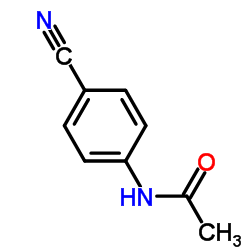
4-CYANOACETANILIDE structure
|
Common Name | 4-CYANOACETANILIDE | ||
|---|---|---|---|---|
| CAS Number | 35704-19-9 | Molecular Weight | 160.173 | |
| Density | 1.2±0.1 g/cm3 | Boiling Point | 392.1±25.0 °C at 760 mmHg | |
| Molecular Formula | C9H8N2O | Melting Point | 206-208 °C(lit.) | |
| MSDS | N/A | Flash Point | 191.0±23.2 °C | |
| Name | N-(4-cyanophenyl)acetamide |
|---|---|
| Synonym | More Synonyms |
| Density | 1.2±0.1 g/cm3 |
|---|---|
| Boiling Point | 392.1±25.0 °C at 760 mmHg |
| Melting Point | 206-208 °C(lit.) |
| Molecular Formula | C9H8N2O |
| Molecular Weight | 160.173 |
| Flash Point | 191.0±23.2 °C |
| Exact Mass | 160.063660 |
| PSA | 52.89000 |
| LogP | 1.37 |
| Vapour Pressure | 0.0±0.9 mmHg at 25°C |
| Index of Refraction | 1.557 |
Synonym: Section 2 - COMPOSITION, INFORMATION ON INGREDIENTS
Risk Phrases: 20/21/22 36/37/38 Section 3 - HAZARDS IDENTIFICATION EMERGENCY OVERVIEW
Harmful by inhalation, in contact with skin and if swallowed. Irritating to eyes, respiratory system and skin. Potential Health Effects Eye: Causes eye irritation. Skin: Causes skin irritation. Harmful if absorbed through the skin. Ingestion: Harmful if swallowed. May cause irritation of the digestive tract. Inhalation: Harmful if inhaled. Causes respiratory tract irritation. Chronic: Not available. Section 4 - FIRST AID MEASURES Eyes: Flush eyes with plenty of water for at least 15 minutes, occasionally lifting the upper and lower eyelids. Get medical aid. Skin: Get medical aid. Flush skin with plenty of water for at least 15 minutes while removing contaminated clothing and shoes. Ingestion: Get medical aid. Wash mouth out with water. Inhalation: Remove from exposure and move to fresh air immediately. If not breathing, give artificial respiration. If breathing is difficult, give oxygen. Get medical aid. Notes to Physician: Section 5 - FIRE FIGHTING MEASURES General Information: As in any fire, wear a self-contained breathing apparatus in pressure-demand, MSHA/NIOSH (approved or equivalent), and full protective gear. Extinguishing Media: Use water spray, dry chemical, carbon dioxide, or chemical foam. Section 6 - ACCIDENTAL RELEASE MEASURES General Information: Use proper personal protective equipment as indicated in Section 8. Spills/Leaks: Vacuum or sweep up material and place into a suitable disposal container. Section 7 - HANDLING and STORAGE Handling: Avoid breathing dust, vapor, mist, or gas. Avoid contact with skin and eyes. Storage: Store in a cool, dry place. Store in a tightly closed container. Section 8 - EXPOSURE CONTROLS, PERSONAL PROTECTION Engineering Controls: Facilities storing or utilizing this material should be equipped with an eyewash facility and a safety shower. Use adequate ventilation to keep airborne concentrations low. Exposure Limits CAS# 35704-19-9: Personal Protective Equipment Eyes: Not available. Skin: Wear appropriate protective gloves to prevent skin exposure. Clothing: Wear appropriate protective clothing to prevent skin exposure. Respirators: Follow the OSHA respirator regulations found in 29 CFR 1910.134 or European Standard EN 149. Use a NIOSH/MSHA or European Standard EN 149 approved respirator if exposure limits are exceeded or if irritation or other symptoms are experienced. Section 9 - PHYSICAL AND CHEMICAL PROPERTIES Physical State: Powder Color: white Odor: Not available. pH: Not available. Vapor Pressure: Not available. Viscosity: Not available. Boiling Point: Not available. Freezing/Melting Point: 206 - 208 deg C Autoignition Temperature: Not available. Flash Point: Not available. Explosion Limits, lower: Not available. Explosion Limits, upper: Not available. Decomposition Temperature: Solubility in water: Specific Gravity/Density: Molecular Formula: C9H8N2O Molecular Weight: 160.17 Section 10 - STABILITY AND REACTIVITY Chemical Stability: Not available. Conditions to Avoid: Incompatible materials. Incompatibilities with Other Materials: Strong oxidizing agents. Hazardous Decomposition Products: Nitrogen oxides, carbon monoxide, carbon dioxide. Hazardous Polymerization: Has not been reported Section 11 - TOXICOLOGICAL INFORMATION RTECS#: CAS# 35704-19-9: AE1846000 LD50/LC50: CAS# 35704-19-9: Oral, mouse: LD50 = 470 mg/kg. Carcinogenicity: 4'-Cyanoacetanilide - Not listed by ACGIH, IARC, or NTP. Other: See actual entry in RTECS for complete information. Section 12 - ECOLOGICAL INFORMATION Section 13 - DISPOSAL CONSIDERATIONS Dispose of in a manner consistent with federal, state, and local regulations. Section 14 - TRANSPORT INFORMATION IATA Not regulated as a hazardous material. IMO Not regulated as a hazardous material. RID/ADR Not regulated as a hazardous material. Section 15 - REGULATORY INFORMATION European/International Regulations European Labeling in Accordance with EC Directives Hazard Symbols: XN Risk Phrases: R 20/21/22 Harmful by inhalation, in contact with skin and if swallowed. R 36/37/38 Irritating to eyes, respiratory system and skin. Safety Phrases: S 26 In case of contact with eyes, rinse immediately with plenty of water and seek medical advice. S 36/37/39 Wear suitable protective clothing, gloves and eye/face protection. WGK (Water Danger/Protection) CAS# 35704-19-9: No information available. Canada None of the chemicals in this product are listed on the DSL/NDSL list. CAS# 35704-19-9 is not listed on Canada's Ingredient Disclosure List. US FEDERAL TSCA CAS# 35704-19-9 is not listed on the TSCA inventory. It is for research and development use only. SECTION 16 - ADDITIONAL INFORMATION N/A |
CHEMICAL IDENTIFICATION
HEALTH HAZARD DATAACUTE TOXICITY DATA
|
| Hazard Codes | Xn: Harmful;Xi: Irritant; |
|---|---|
| Risk Phrases | R20/21/22 |
| Safety Phrases | S26-S28-S36/37/39-S45 |
| RIDADR | 3276 |
| WGK Germany | 3 |
| RTECS | AE1846000 |
| HS Code | 2926909090 |
| Precursor 10 | |
|---|---|
| DownStream 10 | |
| HS Code | 2926909090 |
|---|---|
| Summary | HS:2926909090 other nitrile-function compounds VAT:17.0% Tax rebate rate:9.0% Supervision conditions:none MFN tariff:6.5% General tariff:30.0% |
| 4-CYANOACETANILIDE |
| MFCD00001814 |
| p-Acetamidobenzonitirle |
| EINECS 252-685-2 |
| 4‘-Cyanoacetanilide |
| Acetamide, N-(4-cyanophenyl)- |
| p-cyanoacetanilide |
| 4′-Cyanoacetanilide |
| 4'-cyanoacetanilide |
| ACETANILIDE,4'-CYANO |
| N-(4-Cyanophenyl)acetamide |
| N1-(4-cyanophenyl)acetamide |
| 4-acetaminobenzonitrile |
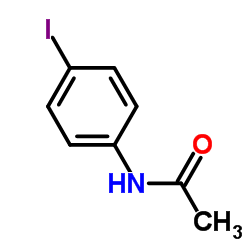 CAS#:622-50-4
CAS#:622-50-4 CAS#:57-13-6
CAS#:57-13-6 CAS#:557-21-1
CAS#:557-21-1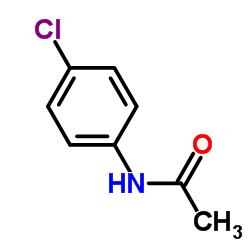 CAS#:539-03-7
CAS#:539-03-7 CAS#:108-24-7
CAS#:108-24-7 CAS#:873-74-5
CAS#:873-74-5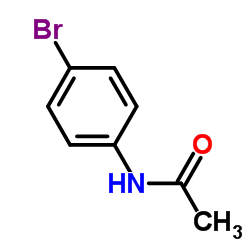 CAS#:103-88-8
CAS#:103-88-8 CAS#:16375-88-5
CAS#:16375-88-5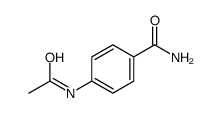 CAS#:58202-83-8
CAS#:58202-83-8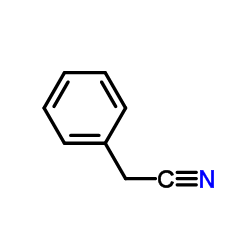 CAS#:140-29-4
CAS#:140-29-4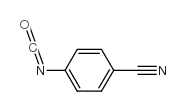 CAS#:40465-45-0
CAS#:40465-45-0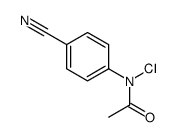 CAS#:14596-61-3
CAS#:14596-61-3![2-METHYLBENZO[D]THIAZOLE-6-CARBONITRILE structure](https://image.chemsrc.com/caspic/385/42474-60-2.png) CAS#:42474-60-2
CAS#:42474-60-2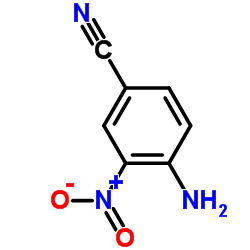 CAS#:6393-40-4
CAS#:6393-40-4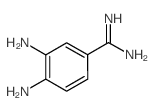 CAS#:68827-43-0
CAS#:68827-43-0 CAS#:13041-79-7
CAS#:13041-79-7 CAS#:148344-28-9
CAS#:148344-28-9 CAS#:1588-83-6
CAS#:1588-83-6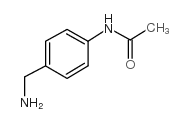 CAS#:25412-53-7
CAS#:25412-53-7
